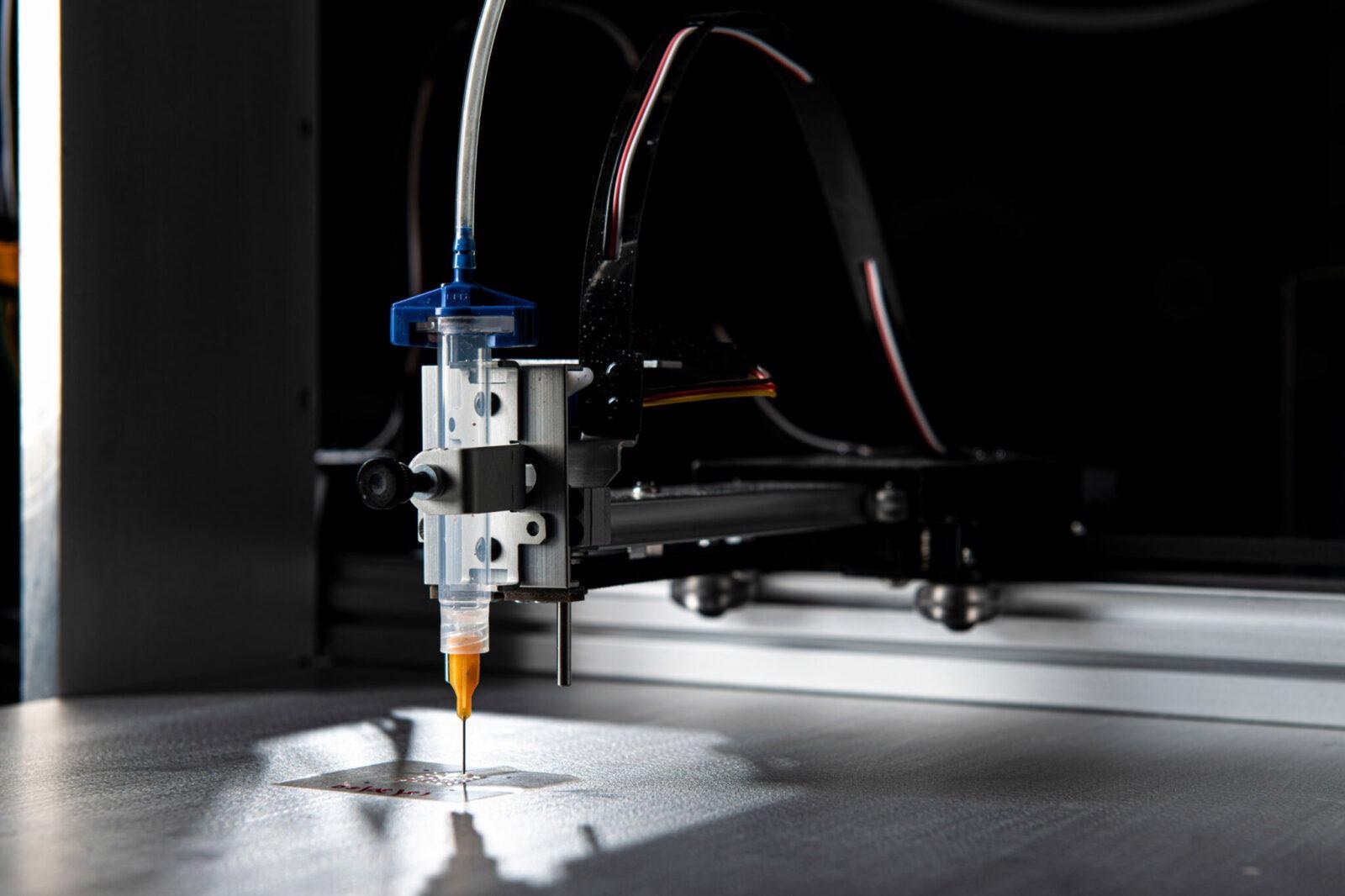Feb 5 2021
With the COVID-19 lockdowns and restricted travel, several people are resorting to virtual doctor appointments and consultations as a safer option than in-person doctor visits.
 Smart bandages being printed. The bandages are a part of Dr Kim’s electrical engineering research project. Image Credit: Michael Pierce, Missouri S&T.
Smart bandages being printed. The bandages are a part of Dr Kim’s electrical engineering research project. Image Credit: Michael Pierce, Missouri S&T.
A team of scientists from Missouri S&T has been making efforts to render this new wave of telemedicine more successful by developing an oxygen-sensing patch printed on a flexible, disposable bandage.
The smart bandage can interact with a smartphone and could allow remote monitoring to enable early detection of illnesses like pressure ulcers, thereby facilitating immediate intervention or treatment.
Our current work focuses on designing and optimizing a tissue oxygen sensor by using inexpensive inkjet printing techniques. Concurrently, we are developing a smartphone app that can interpret sensor images. This prototype will be evaluated using phantom tissue that mimics a pressure ulcer site.
Dr Chang-Soo Kim, Professor of Electrical and Computer Engineering, Missouri S&T
Kim has been collaborating with Dr William Stoecker, a dermatologist at The Dermatology Center in Rolla and an adjunct assistant professor at Missouri S&T, and Dr Paul Nam, an associate professor of chemistry at Missouri S&T.
The researchers are confident that they can develop a cost-effective, easy-to-use diagnostic bandage that would offer early intervention for chronic sores.
According to Stoecker, there has been an increase in the diagnoses of chronic wounds like ulcers due to the increased prevalence of obesity, diabetes, strokes, and other vascular diseases in aging populations. Long-time immobility due to assisted-living care or hospital stays can also cause such sores.
To positively reduce the length of a hospital stay and save millions of dollars in annual wound care costs, the team has combined existing best practices in medicine and biomedical engineering to create the first smart sensor bandage that can detect ulcer formation and prospectively prevent the decomposition of skin.
The challenges faced by the researchers are making an affordable smart bandage with materials totaling less than a dollar and improving a printable ink composition for the bandage.
Mousumi Bose, one of Nam’s PhD students, has developed the composition with an inkjet printer created by Jason Boes, an undergraduate student. Jason Hagerty, a computer engineering PhD student at Missouri S&T, has been developing a colorimetric image processing app with the resources already found in a standard smartphone.
In general, injuries caused by ulcers must be evaluated manually and assessed by medical practitioners. However, a smart dressing could detect blood circulation impairment and poor oxygenation surrounding the at-risk skin region.
Our optical sensor bandage functions by detecting a low skin oxygen level caused by compromised circulation. This low oxygen produces a color change called luminescence intensity. The smartphone can then take a photograph of the dressing and transmit it to enable remote monitoring or encourage timely intervention before major skin decomposition occurs.
Dr Chang-Soo Kim, Professor of Electrical and Computer Engineering, Missouri S&T
The smart bandages can intervene at the site of an injury, such as a foot ulcer, before it can be even seen, thus offering feedback to the care provider of the patient and complete a diagnosis, all from the comfort of the patient’s own home.